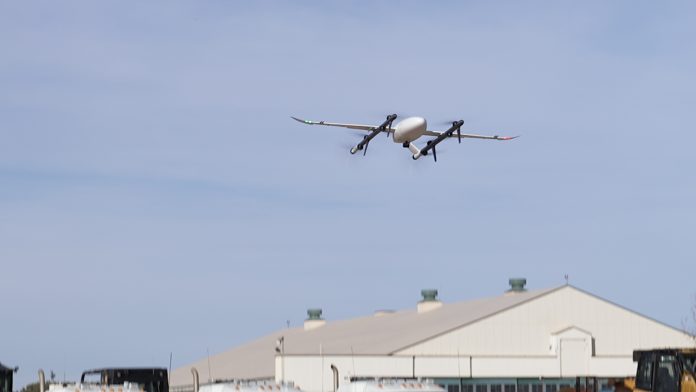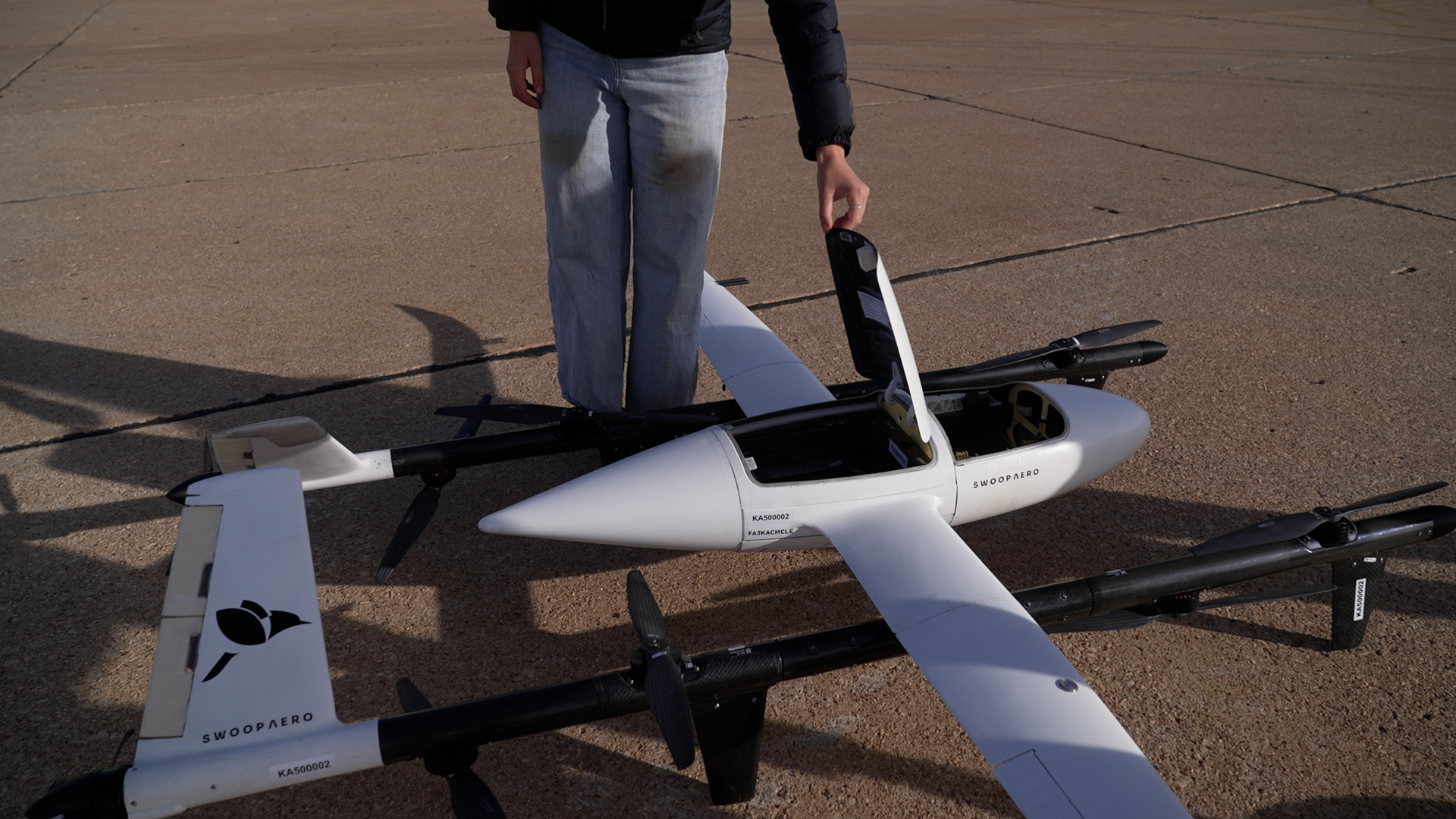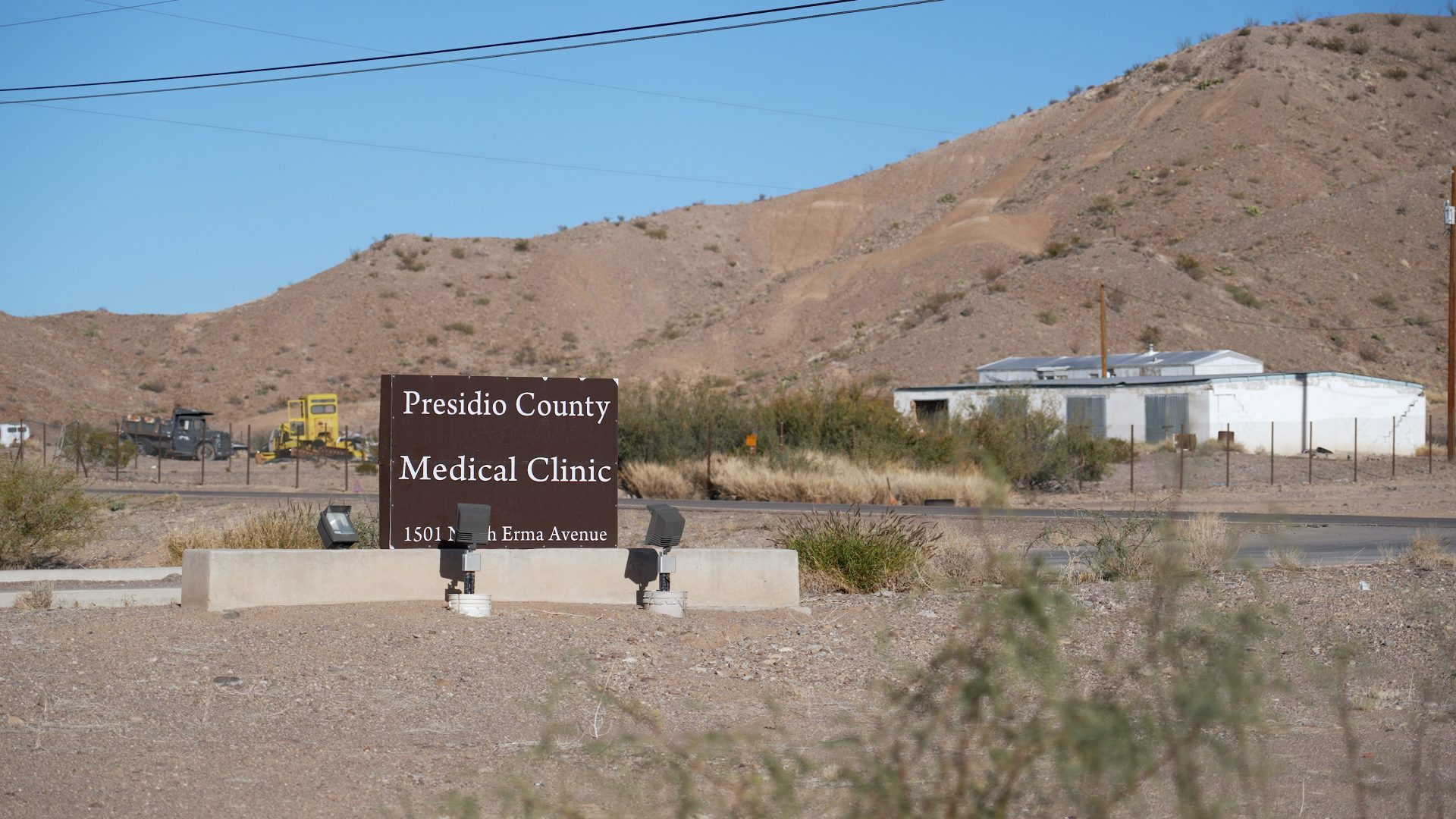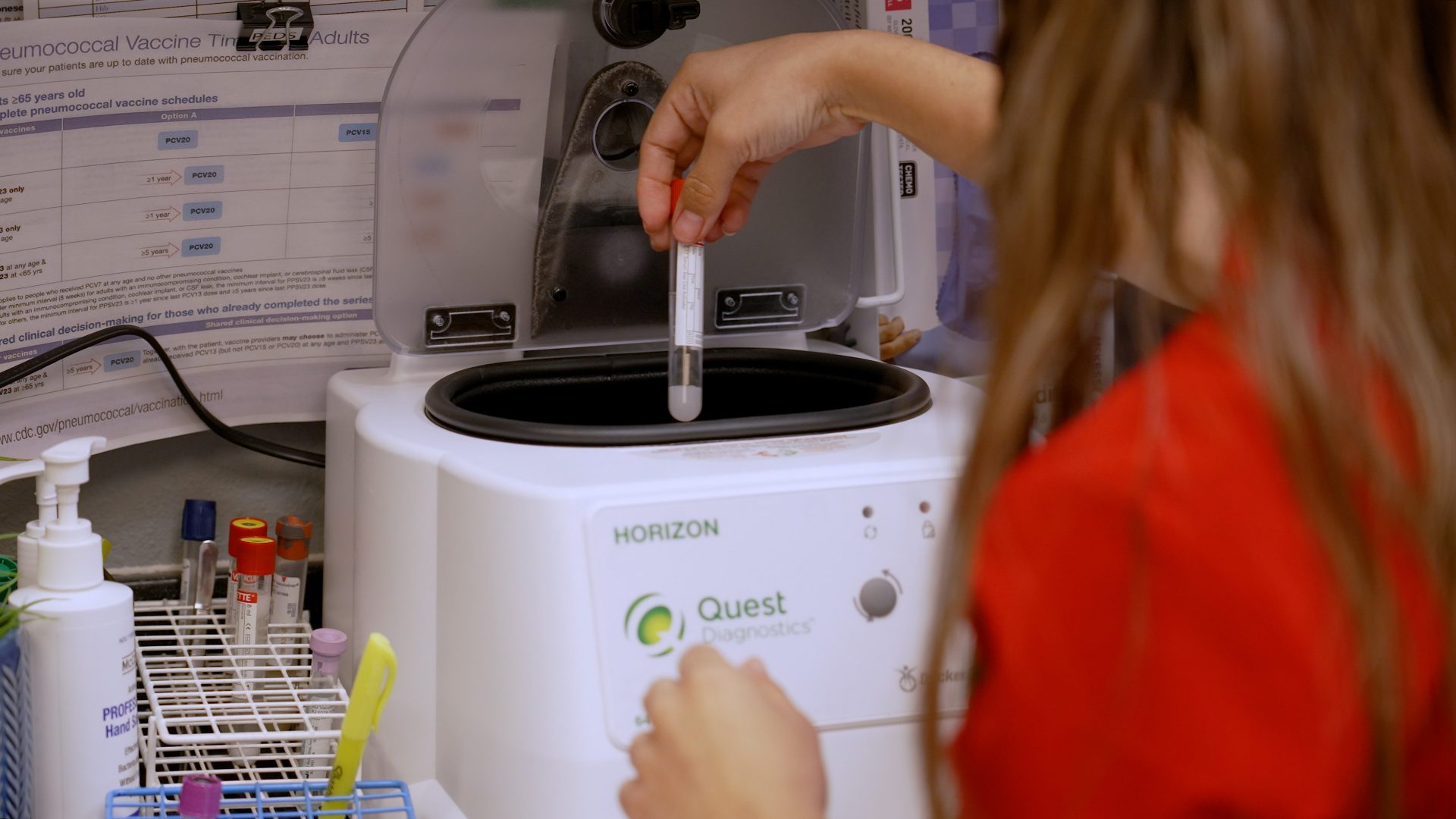
Braving rain and temperatures in the mid-50s, Texas Tech University Health Sciences Center demonstrated drones it plans to use to enhance healthcare access in remote areas of West Texas.
Texas Tech University Health Sciences Center and 2THEDGE hosted the Matador UAS Consortium Executive Demo Day at the TTUHSC Academic Classroom Building, 801 W. Fourth St.
Phil Sizer, associate vice president for research innovation at TTUHSC, said the drones demonstrated Wednesday are state of the art.
“We’ve only … performed our one set of proof of value flights this time here,” Sizer said.
A test flight was made between Alpine and Presidio.
“The plan is to grow that service to support healthcare in these far-reaching West Texas counties,” Sizer said.

The drones will carry things to the patient and from the patient. It could be vaccines, medicine and critical supplies.
Texas Tech is partnering with Matador and Swoop Aero on the venture. Ty Harmon said a separate company has been set up, Valkyre UAS Solutions, that’s the drone operation and the firm responsible for partnering with Swoop on the aircraft, doing ground operations, training and pilot operations. The university will be a customer of the drone operations that will be established.
“We believe in transforming healthcare through innovation and collaboration. This is one tremendous innovation that has the potential to help the delivery of healthcare to our remote patients in far-reaching West Texas counties. Our patients will benefit from it. Our healthcare providers will benefit from it because that will help increase the efficiency and success of the service deliveries. That’s why we want to be involved and our researchers want to be involved in that as well,” Sizer said.
Craig Arnold, chief operating officer of Swoop Aero, said the company is based in Melbourne, Australia. Arnold said he spends about a third of his time in Africa, about a third of it here and little bit of time in Melbourne.
“The aircraft is engineered to fly in about 90% of weather conditions. That would include wind gusts up to 35 knots, and about three millimeters of rain per hour. Currently, we’re flying less than that. We’re flying in 24 knots and one millimeter of rain per hour. But that’s just because this version of aircraft is still relatively new at 700 and some hours,” Arnold said.
The drones use a remote piloting system.
“The pilot has a laptop that has computer connectivity through the cloud,” Arnold said. “It can see all the sensors on the aircraft. It receives error messages if there is something and it is constantly calculating based on wind and distance how the aircraft is performing. If there’s an issue with performance, then the pilot gets a notification and they have some choices. Sometimes the aircraft will even make a choice on its own, and it will say we need to do something beyond the routine. The pilot’s choices are hover in place while I make a decision, return to base, keep going. It’s a small issue. It’s fine, just keep going. Or they can even do an emergency landing, which is obviously our least frequent and certainly least best option,” Arnold said.
“When they plan the routes. They plan emergency landing spots along the route just like a commercial airline when it flies from here to Kansas City. There are multiple airports that it could land at in an emergency. They do the same thing when they play on the drone route. So they’ll say I’m going from Alpine to Presidio if I need to emergency land. In that route I think we had six open fields basically that were predetermined that we said if we needed to we could land,” he added.

Arnold said the drones are flying at 100 mile capacity right now.
“We have flown longer than that, a couple times considerably longer than that, but we’re flying in the U.S. at 100 miles. And again, depends a little bit on the wind speed and the payload. So if I put the maximum payload, and I’ve got a really heavy headwind, it’s not going to go 100 miles. In this case, in our week-long testing that we just did (from) Alpine to Presidio we had that happen one time,” Arnold said.
“We loaded some cargo and we had a GoPro underneath it … Because that was attached below the aircraft, that takes drag. Then we also put payload in it, so there was a couple of pounds of expired medicine that we were using as examples and it took off at 10 knots of wind as a headwind that headwind grew to 20-ish knots … from Alpine to Presidio. The computer made a decision and said, I’m going to turn around and go back to base. It just notified the pilot … He could have aborted the mission, but the computer says it’s better for me to turn around and fly back because of these parameters,” he added.
The pilot agreed and it landed. They took the GoPro off and it helped.
“In a normal mission, where we were flying photography and data gathering on a regular basis, that would be embedded up into the aircraft so just the lens would come out through the bottom,” Arnold said.

The drones are engineered for 12 pounds, but right now they are only flying with six pounds.
“Six pounds … allows us to cover blood samples. A good example, in Malawi during COVID we were flying 1,100 doses of Pfizer vaccine in one drone, and one delivery. Most villages don’t have 1,100 people that can be vaccinated in one day because they only have one or two nurses doing the vaccination, so we actually there had more capacity than what we needed,” Arnold said.
Harmon said they have a route from Fort Stockton to Presidio through Alpine approved for four years.
He added that they are in “low production” currently. They are in the process of raising money, specifically to put the drone network in. They are seeking foundations, philanthropy and grants to get things up and running.
“We have aircraft in partnership. We’ve demonstrated capability, we’re raising those initial dollars to get two initial aircraft into that area. And then as we can scale those resources, we will be adding other drones. So quite candidly, if someone wrote me a check today, we could be operational by before the summer with regular twice-daily flights to those communities,” Arnold said.
He added that they made three flights one day this past week and the ground time was less than 10 minutes each time and that was to swap the battery and take some pictures.
Arnold said their drones in Africa fly a little over six missions a day per aircraft.
“But in Africa, it’s almost like a NASCAR pit crew where they can get the cargo out (and) swap the batteries in under a minute and then push the button and it’s off. That’s how user-friendly it is,” Arnold said.
The project that a flight would leave in the morning when the winds are lower, goes down to Presidio, picks up any labs that were collected overnight and brings it back to Alpine to be processed.
In the afternoon, it returns with the results of those labs with medications.
“So a twice daily route, and then just multiply that by Terlingua, by Marathon, by Marfa, by Van Horn and then have an ability to go up to Fort Stockton for a little bit bigger town, a little more capability to connect into that hub and spoke,” Harmon said.



